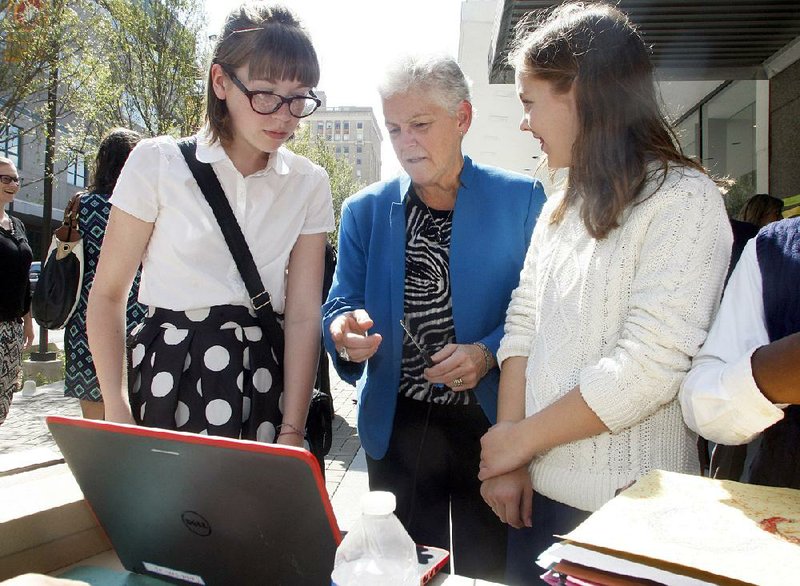U.S. Environmental Protection Agency Administrator Gina McCarthy surveyed the Little Rock Creative Corridor's $2 million stormwater filtration project Wednesday and met with the eStem students who now use it for scientific research.
McCarthy also visited with Gov. Asa Hutchinson in the afternoon, where he relayed his concerns for the EPA's Waters of the United States rule.
Waters of the United States is a rule implemented by the EPA in August that expands the definition of what can be considered a regulated body of water.
EPA and environmental advocates said the rule would protect water sources from pollution, but agricultural groups have been concerned that the rule isn't clear enough on what waters would be regulated. As a part of a federal judge's ruling, Arkansas is currently exempt from complying with the rule, along with 12 other states that sued the EPA.
"Administrator McCarthy stopped by my office as a courtesy while she was in town," Hutchinson said in a statement to the Arkansas Democrat-Gazette. "It gave me the opportunity to raise concerns over the EPA's water plan and its impact on Arkansas farmers. Our conversation was pleasant, and I appreciate her taking the time to discuss these important issues with me.
"Any time I can have discussions with a member of the president's cabinet on such matters, I certainly view it as a positive and consider it time well spent."
Earlier in the day, McCarthy and a caravan of several staff members pulled up to the 600 block of Main Street for a 30-minute tour of the street downtown between 6th Street and Capitol Avenue.
McCarthy was joined by a cadre of officials, including Arkansas Department of Environmental Quality Director Becky Keogh, whom she greeted with a hug. Also in the group were Arkansas Natural Resources Commission Executive Director Randy Young, Little Rock City Manager Bruce Moore, Little Rock Public Works Director Jon Honeywell, eStem CEO John Bacon, eStem science specialist Dennis Pevey and several others, who discussed the impact that EPA investments have had on the city's Main Street.
The EPA has given $2 million toward downtown Little Rock revitalization through Brownfields grants involving Pulaski County and the $900,000 given for the stormwater filtration project that McCarthy toured Wednesday.
The Brownfields Program provides funds to clean up sites that are difficult to develop because of contamination or the possibility of contamination. After those grants were put to use on Main Street, public and private entities then invested more than $100 million in new developments.
The stormwater filtration project, part of a national trend to expand urban conservation efforts, helps clean stormwater as it drains and water new plants along Main Street. The project has been under construction since March 2014 and has undergone some cost overruns bringing it to about $2 million, but those have all been covered through money already budgeted by Little Rock.
EPA Region 6 Director Ron Curry toured the Creative Corridor and stormwater project in September and called it "unique."
On Wednesday, McCarthy said that Little Rock has been "outstanding" in working with the EPA on sustainability measures.
Pevey brought eStem students of all ages out to the event Wednesday, some of whom were conducting research on the Creative Corridor.
A handful of students were testing the soil in the stormwater runoff project and others were using Arduinos -- computer hardware that can sense physical conditions -- to measure the temperature of the area to determine if the corridor was an "urban heat island." An urban heat island is an area that is warmer than surrounding rural areas because of development and decreased vegetation.
McCarthy, who told the students that she was jealous of what they were able to do at such young ages, told the students that they are the future and that she was glad they had the opportunities to do outdoor research.
"I think for a long time we forgot about that [going outside]," she said. "It was all about the indoors."
"As you grow up, people will tell you you have to back off really tough environmental standards," she said. But setting certain standards to create better places to be and live are important, she added.
Metro on 10/08/2015
